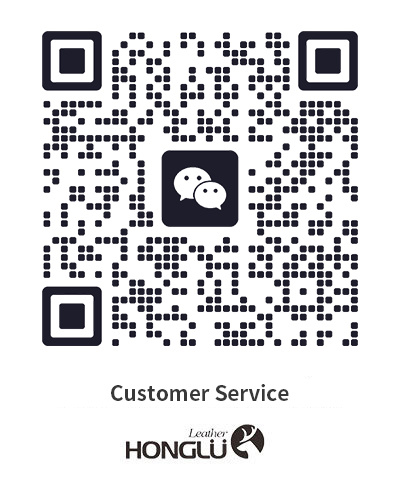01
2025
-
07
The Rise of Recycled PU Leather: A Sustainable Solution for Modern Textiles
Recycled PU leather, also known as recycled polyurethane leather, represents a significant advancement in the textile industry, particularly in the realm of faux leather. As global awareness of environmental issues rises, the demand for sustainable materials has surged, making recycled PU leather a compelling alternative for consumers and manufacturers alike. The production of recycled PU leather
Recycled PU leather, also known as recycled polyurethane leather, represents a significant advancement in the textile industry, particularly in the realm of faux leather. As global awareness of environmental issues rises, the demand for sustainable materials has surged, making recycled PU leather a compelling alternative for consumers and manufacturers alike.
The production of recycled PU leather begins with the collection of post-consumer and post-industrial waste, primarily from polyurethane-based products. This waste is processed and transformed into a usable material, significantly reducing the amount of plastic waste that would otherwise end up in landfills. By repurposing existing materials, recycled PU leather not only conserves resources but also minimizes the carbon footprint associated with producing new synthetic leather.
One of the key advantages of recycled PU leather is its versatility. Similar to traditional PU leather, it can be used in a wide range of applications, including clothing, accessories, upholstery, and automotive interiors. This versatility makes it an appealing option for designers and brands looking to incorporate sustainable materials into their collections without sacrificing style or functionality.
In terms of durability, recycled PU leather tends to perform well under a variety of conditions. It is water-resistant, easy to clean, and can withstand wear and tear, making it suitable for everyday use. Additionally, this material can be produced in a range of textures and finishes, allowing for creative freedom in design. This adaptability ensures that recycled PU leather can meet the aesthetic demands of consumers while remaining environmentally friendly.
The environmental impact of recycled PU leather is noteworthy. By opting for this sustainable alternative, manufacturers can significantly reduce the use of virgin materials, ultimately contributing to a decrease in resource depletion and pollution. Moreover, the production process of recycled PU leather typically requires less energy than that of traditional synthetic leathers, further enhancing its eco-friendly profile.
As consumers become increasingly conscientious about their purchasing decisions, the appeal of recycled PU leather continues to grow. It not only provides a stylish and durable alternative to conventional leather but also aligns with the broader movement towards sustainability in fashion and textiles.
In conclusion, recycled PU leather stands out as a promising material in the quest for sustainable textile solutions. Its combination of durability, versatility, and reduced environmental impact makes it an attractive choice for manufacturers and consumers alike. As awareness of the benefits of recycled materials increases, it is likely that recycled PU leather will play a more prominent role in the future of the textile industry, paving the way for a greener and more sustainable future.
The production of recycled PU leather begins with the collection of post-consumer and post-industrial waste, primarily from polyurethane-based products. This waste is processed and transformed into a usable material, significantly reducing the amount of plastic waste that would otherwise end up in landfills. By repurposing existing materials, recycled PU leather not only conserves resources but also minimizes the carbon footprint associated with producing new synthetic leather.
One of the key advantages of recycled PU leather is its versatility. Similar to traditional PU leather, it can be used in a wide range of applications, including clothing, accessories, upholstery, and automotive interiors. This versatility makes it an appealing option for designers and brands looking to incorporate sustainable materials into their collections without sacrificing style or functionality.
In terms of durability, recycled PU leather tends to perform well under a variety of conditions. It is water-resistant, easy to clean, and can withstand wear and tear, making it suitable for everyday use. Additionally, this material can be produced in a range of textures and finishes, allowing for creative freedom in design. This adaptability ensures that recycled PU leather can meet the aesthetic demands of consumers while remaining environmentally friendly.
The environmental impact of recycled PU leather is noteworthy. By opting for this sustainable alternative, manufacturers can significantly reduce the use of virgin materials, ultimately contributing to a decrease in resource depletion and pollution. Moreover, the production process of recycled PU leather typically requires less energy than that of traditional synthetic leathers, further enhancing its eco-friendly profile.
As consumers become increasingly conscientious about their purchasing decisions, the appeal of recycled PU leather continues to grow. It not only provides a stylish and durable alternative to conventional leather but also aligns with the broader movement towards sustainability in fashion and textiles.
In conclusion, recycled PU leather stands out as a promising material in the quest for sustainable textile solutions. Its combination of durability, versatility, and reduced environmental impact makes it an attractive choice for manufacturers and consumers alike. As awareness of the benefits of recycled materials increases, it is likely that recycled PU leather will play a more prominent role in the future of the textile industry, paving the way for a greener and more sustainable future.
Related news
undefined






